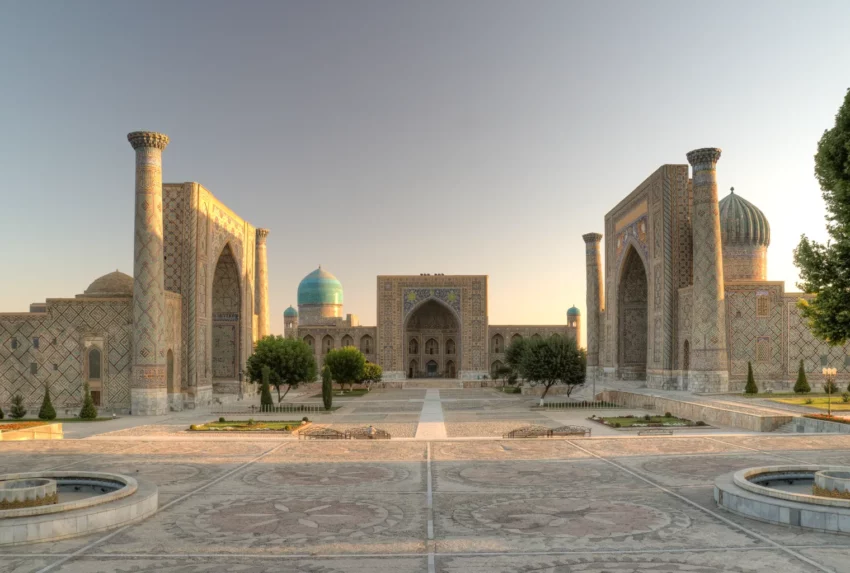Get your dose of History via Email
An Overview of Registan
The Registan was the heart of the ancient city of Samarkand during the Timurid dynasty, one of the most significant cultural and commercial centers of Central Asia. The name ‘Registan’ means “Sandy place” or “desert” in Persian. This public square was pivotal to the urban development of Samarkand, situated at the crossroads of the world’s merchant routes in the Silk Road era.
The Architectural Marvels of Registan
Surrounded by monumental structures, the Registan was famed for its trio of madrasahs — Islamic schools — the Ulugh Beg Madrasah, the Tilya-Kori Madrasah, and the Sher-Dor Madrasah. Each madrasah exhibits distinctive architectural features, rich in decoration and historical significance.
Ulugh Beg Madrasah
The Ulugh Beg Madrasah, constructed from 1417 to 1420 under the auspices of Ulugh Beg, is the oldest of the three. The madrasah features traditional Islamic architecture adorned with blue tiles and intricate geometric patterns. This institution was an eminent center of learning, attracting scholars from all over the Muslim world to study astronomy, mathematics, and theology.
Shir-Dor Madrasah
Following the Ulugh Beg Madrasah is the Sher-Dor Madrasah, constructed roughly two centuries later, from 1619 to 1636, under the reign of Yalangtush Bahadur. Its main facade is distinguished by a mosaic of a tiger-like creature with a rising sun on its back, flanking a spandrel. Such imagery, unusual for traditional Islamic art that tends to avoid animal representations, symbolizes the ruler’s might.
Tilya-Kori Madrasah
The third madrasah, Tilya-Kori, commenced under the same ruler in 1646 and was completed in 1660. This structure served dual purposes, as both a madrasah and the city mosque. It is renowned for its lavish decoration, including the use of gold, which lives up to its name “Tilya-Kori”, meaning “coated with gold” in Persian. The interior design of the mosque is particularly exquisite, representing the high point of the town’s architectural decor.
The Restoration and Preservation of Registan
As time passed, the buildings of the Registan suffered from decay due to their substantial age and the natural forces of nature. However, in the early 20th century, the Soviet authorities undertook extensive restoration work to preserve these historic edifices. While some criticisms have arisen regarding the historical accuracy of the restorations, the efforts have nonetheless ensured that the Registan remains a testament to Central Asia’s resplendent architectural past.
The Modern Day Registan
Today, the Registan is an important historical site and a center of international tourism. It has been described as one of the most impressive places in Central Asia, drawing visitors who wish to glean a sense of the grandeur of the Timurid Empire. The madrasahs now host various establishments, including souvenir shops, which contribute to the preservation and promotion of this loci of cultural heritage.
Registan’s Legacy
The significance of the Registan extends beyond its physical beauty and architectural achievement; it represents a confluence of cultural, educational, and spiritual traditions of the region. As it continues to stand, the Registan remains a powerful symbol of the Islamic scholarly tradition and the rich history of Samarkand as a hub of commercial and intellectual exchange.
Sources:

